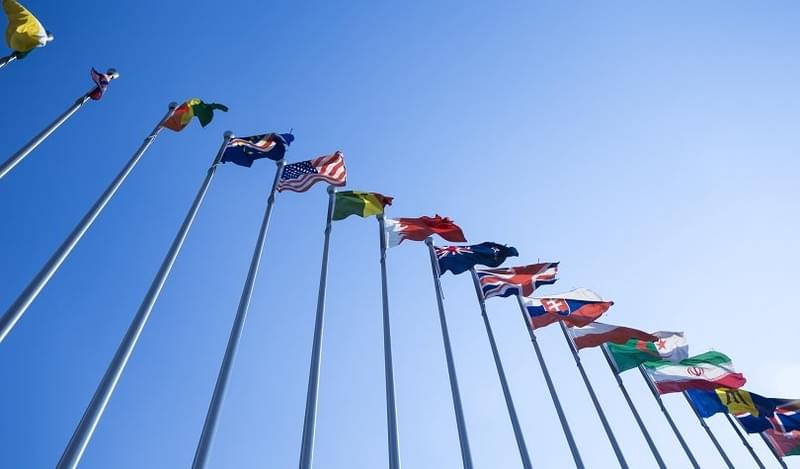Let’s review the global outlook. The US economy hit a soft patch in H1. While it appears to be strengthening in Q3, that softness has helped push out Fed tightening expectations significantly. We believe the September 21 meeting is too soon to hike again, while the November 2 meeting may be avoided due to the proximity of the US elections. That leaves the December 14 FOMC meeting. Until then, we foresee a nice window, a sweet spot if you will, where EM can continue to gain traction.
The Bank of England, the Bank of Japan, the RBA, and the RBNZ have all eased in recent weeks. Further easing is possible from several other central banks in the developed world, including Europe – where the spectre of Brexit is likely to prompt stronger focus on maintaining an investment friendly environment at all costs. With zero and/or negative interest rates prevailing in a large segment of the developed world bond markets, it seems natural that money seeking positive returns would flow into EM.
The latest data from the Institute for International Finance (IIF) support this. Total portfolio investment flows to EM have been positive in June and July, and in 4 of the past 5 months. Data so far in August suggest the inflows are continuing. To underscore just how tough it’s been for EM over the last year, the 12-month total inflows just turned positive in July, to the tune of US$900mn. While small, this was the first positive 12-month total since December.
Yet we caution investors against getting too optimistic about EM. Rather than view it as a large monolithic entity, we have long felt that investors must be more discerning and to view each country on its own merits. The global investment climate remains difficult, and now is not the time for complacency.
 The Four Pillars of EM
The Four Pillars of EM
From a longer-term perspective, EM and EM investors are coming to grips with the fact that the 10-year boom has ended. What many thought to be a structural improvement in EM fundamentals instead turned out to be a largely cyclical one. We identify four pillars of the decade-long EM rally: 1. Strong global growth, 2. High commodity prices, 3. Weak US dollar, and 4. Low US interest rates. Those pillars have more or less eroded or broken down over the past couple of years, and so EM has struggled.
For now, the first two factors are not coming back. The last two factors are likely to be the main positive drivers in the coming months. Because we are more constructive on the US economy than much of the investment community, we look for the Fed to resume tightening this year and for the dollar to resume its upward march. As we highlighted earlier, virtually every other major central bank is easing even as the Fed contemplated tightening. Even a more limited divergence story still favours the dollar.
A purely liquidity driven model of investing will work… until it doesn’t. EM and risk have typically come under pressure when prospects for Fed tightening rise, such as the run-ups to FOMC meetings and speeches by Fed Chair Janet Yellen. So even though we do not see the next Fed hike until December, EM is likely to come under some periodic pressures in the coming months. Those with the weakest fundamentals will suffer the most.
Politics Reigns Supreme
High commodity prices translated into strong economies and fundamentals during the boom years, and helped mask many underlying problems. The end of the boom has led to deteriorating fundamentals, laying bare many fault lines in EM. While commodity exporters have been hurt across the board, it’s no coincidence that many of the worst-hit countries have been the ones with the most dysfunctional political systems.
As of this writing, the failed coup attempt in Turkey has already led S&P to quickly downgrade its rating to BB with a negative outlook. This is where our own sovereign rating model rates Turkey, but we see further downside risks. The failed coup attempt has led to a huge purge of the Turkish military, judiciary, press, and academia. As President Erdogan deepens his efforts at exerting complete control over the nation, the economic outlook will continue to worsen.
Moody’s has Turkey under review for possible downgrade, and we think it will eventually cut Turkey to a sub-investment grade Ba1. If so, the loss of investment grade would likely lead to forced selling of Turkish assets, since many money managers have mandates that require at least two investment grade ratings in order to be investible.
Elsewhere, South Africa faces a similar dynamic. We believe that the recent local elections losses for the ruling ANC will be positive in the long term, but negative in the short-term. The rise of a legitimate opposition party is a good development, but the ANC’s dwindling support will likely lead it to follow more populist policies ahead of the 2019 nation elections.
This would likely tip the nation into sub-investment grade territory as well. It currently is hanging on to its BBB-/Baa2/BBB- ratings. The country’s fundamentals are already weak, and a combination of larger budget deficit and rising debt loads would likely push the ratings to sub-investment grade.
Brazil has already faced tremendous selling pressures, deep recession, and the loss of its investment grade status. As such, the worst is most likely behind it. However, the road to recovery remains elusive despite the turn in sentiment. Recent reports suggest acting President Temer may be implicated in illegal campaign contributions, further muddying the waters even as the impeachment process slowly moves forward.
Right now, Brazilian asset prices are pricing in perfection. That is, Rousseff is impeached, the Temer government pushes through structural reforms, and the economy recovers. Of these, we think only the first can be assured. The Temer government is already getting some pushback on its plans to freeze spending, and we believe an unelected government will simply reach limits of what it can actually do. The next elections aren’t until 2018.
Despite the concerns that we’ve cited, yield-hungry investors have bought up higher yielding assets in Brazil, Turkey, and South Africa this year despite these countries having what we view as very weak fundamentals and underlying political fissures. When market sentiment worsens, these three are likely to come under the greatest pressure.
In this current environment, we feel most comfortable with Asia. China has been the source or market instability at times for the market, but not lately. Indeed, investors appear comfortable with the slowing growth scenario for the mainland economy.
Elsewhere in the region, both India and Indonesia have recently been able to advance their reform agendas. The introduction of a national goods and services tax (GST) is an especially noteworthy development. Both have large domestic markets and so are less vulnerable to the global growth slowdown than the more export-oriented EM economies. More importantly, India and Indonesia have benefited from having reformers at the helm.
Malaysia stands out in the region as being riskier, and this too can be chalked up to political concerns. Prime Minister Najib has so far avoided direct implication in the 1MDB scandal, but ongoing investigations by the US, Switzerland, and Singapore warrant some caution.
Politics and Institutional Stability: Long vs. Short Term
We touched on Turkey and South Africa as the source of potential problems. In general, much of the EMEA region is subject to downside risks stemming from bad politics. Hungary and Poland both have governments that can be considered to be less market-friendly than past ones.
Latin America has improved in terms of politics. As noted Brazil appears on the cusp of impeaching Rousseff in favour of a more market-friendly government. This is a positive development. In December, Argentina elected a government that is committed to reversing the harmful policies of the Kirchner/Fernandez years. Chile, Colombia, Mexico, and Peru have all suffered from lower commodity prices, but good governance during the boom years has given these countries a cushion to rely on.
The two potential problem countries in this region are Bolivia and Venezuela. In Venezuela, the situation has turned into a tragedy. The wealth accumulated from the oil boom years is long gone, and citizens cannot get the most basic needs in terms of food and medicine. The opposition took control of the congress last year and is pushing for a recall referendum, but President Maduro shows no signs of relinquishing control of the country. Default risk remains elevated.
In Bolivia, President Morales lost a constitutional referendum in February that would have allowed him to run for a fourth consecutive term. His current term ends in 2020, but we suspect we have not seen the last of his efforts to extend his rule. Meanwhile, Bolivia continues to struggle under the weight of lower oil prices. Fitch recently downgraded it a notch to BB-, and further downgrades are possible.
It’s clear that EM as an asset class can still thrive even under difficult global conditions. However, it is equally clear that not every EM has the institutional stability that is often required for long-term prosperity. As the economic backdrop remains weak, the political element becomes a very important determinant for a country’s trajectory going forward. Again: it’s the politics, stupid.






